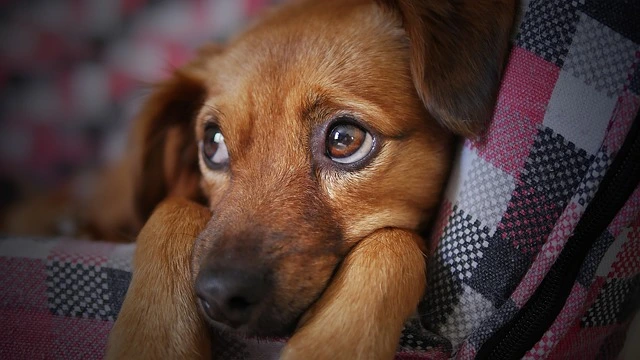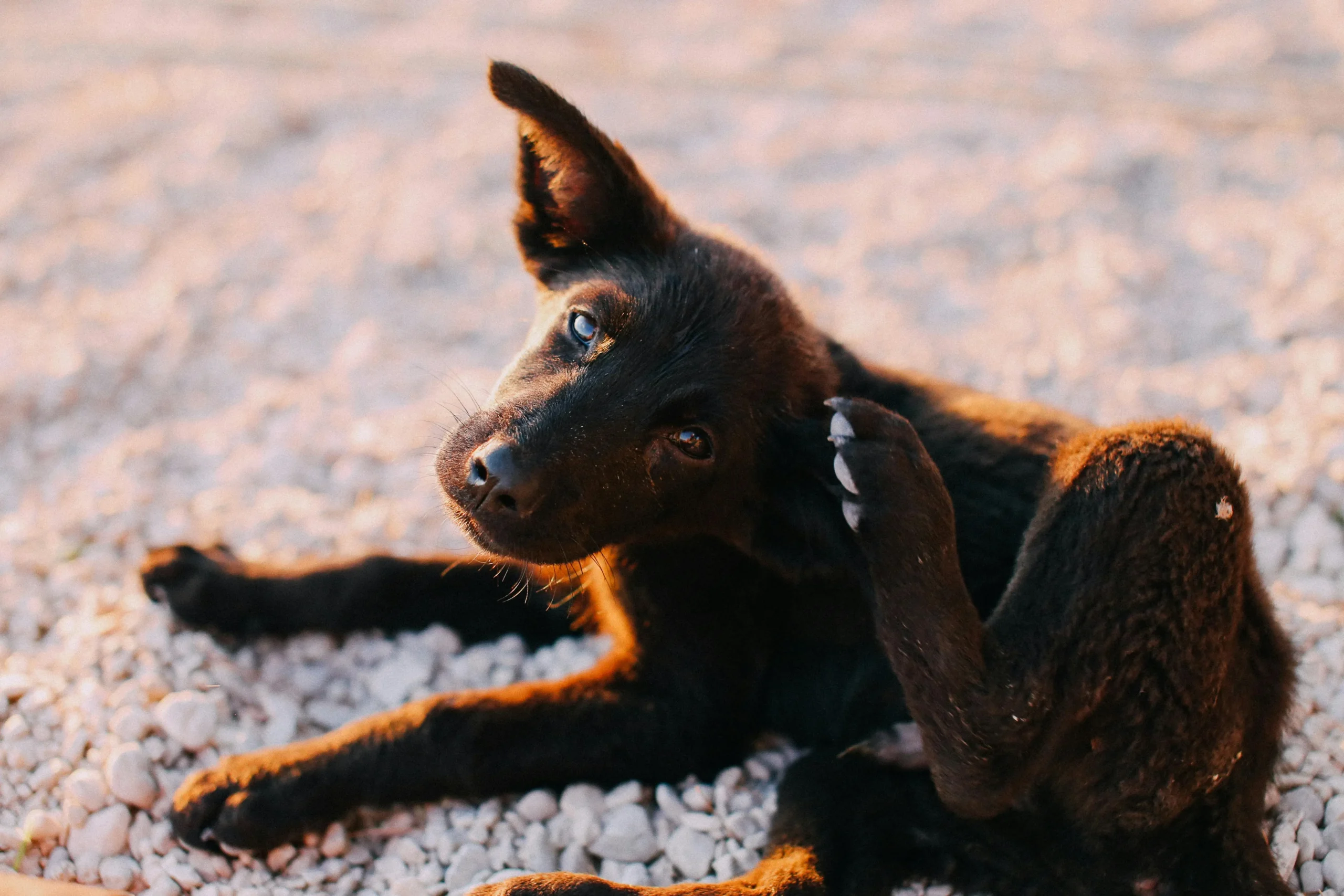You’ve just brought home your adorable new puppy, and they’re bouncing off the walls with energy. You’re eager to show them the world, take them for walks, and let them explore your yard. But as a responsible pet parent, you’re wondering: when can puppies go outside safely without risking their health?

Table of Contents
Quick Answer
Puppies can begin limited exposure in your own yard after their first vaccinations at 6-8 weeks. They should only venture into public areas 7-10 days after their final core vaccine (typically at 16 weeks), per your veterinarian’s guidance. This timing protects puppies from potentially fatal diseases while allowing for crucial early socialization.
TL;DR: Use your secured yard after first shots for socialization. Carry young puppies in public places before full vaccination for safe exposure to new environments.
Why It Matters
Exposing puppies to the outdoors too early can put them at risk for serious illnesses like parvovirus, distemper, and parasites. These diseases can be fatal, especially to young puppies with developing immune systems. On the flip side, keeping puppies completely isolated until full vaccination can lead to poor socialization, resulting in fear, anxiety, and behavioral problems that can last a lifetime. Finding the right balance is critical for both physical health and behavioral development.
Understanding Puppy Immunity & Vaccination Schedules
When puppies are born, they receive temporary immunity from their mother through maternal antibodies in her milk. This protection begins to fade between 6-12 weeks of age, creating a vulnerability window where puppies aren’t fully protected by either maternal antibodies or their own vaccine-stimulated immunity.
A typical vaccination schedule includes:
- 6-8 weeks: First DHPP vaccine (distemper, hepatitis, parainfluenza, parvovirus)
- 10-12 weeks: Second DHPP vaccine
- 14-16 weeks: Third DHPP vaccine
- 16+ weeks: Rabies vaccine
The timing of these vaccines is crucial—they’re spaced to catch the puppy’s immune system as maternal antibodies wane. This explains why full protection isn’t achieved until 7-10 days after the complete series is finished. For a comprehensive breakdown of vaccination timing, requirements by region, and what to expect at each vet visit, check out our complete puppy vaccination schedule guide.
Essential Outdoor Safety Products for Puppies
Secure, Adjustable Puppy Harness
Perfect for puppies just starting outdoor adventures, this harness distributes pressure evenly across the chest instead of the delicate neck. The adjustable straps accommodate rapid growth while the secure fit prevents escape artists from backing out. It does take a bit longer to put on compared to a simple collar, but the safety benefits are worth it. Puppy-Specific No-Pull Harness.
Standard Training Leash
Ideal for puppies learning leash manners, this fixed-length leash provides consistent control and safety during early training. The lightweight material and padded handle make it comfortable for both puppy and owner. Unlike retractable leashes which can fail or encourage pulling, a standard leash helps teach proper walking habits from the start. Puppy Training Leash .
Portable Paw Washer
Perfect for active puppies exploring muddy yards, this portable cleaner quickly removes dirt and potential contaminants from paws before they enter your home. The soft silicone bristles are gentle on sensitive puppy paws while the compact design makes it easy to use after every outdoor session. It requires regular cleaning to prevent mold growth in the moist environment. Puppy Paw Cleaner Cup .
Step-by-Step Guide to Safely Introducing Your Puppy to the Outdoors
- Start in your own yard (after first vaccinations): Begin with short 10-15 minute sessions in your secured, clean yard. Ensure no unknown dogs have accessed this area recently.
- Create a potty spot: Designate a specific area for bathroom breaks. Take your puppy there consistently to establish a routine and minimize accidents. Once your puppy is fully vaccinated and reliably potty trained, installing a dog door can give them independent access to their designated outdoor area, which is especially convenient for homes with sliding glass doors leading to secure yards.
- Begin carrying sessions (from 8 weeks): Carry your puppy in public places without putting them down. This provides vital exposure to sights, sounds, and smells without disease risk.
- Introduce the harness and leash: Start indoors, letting your puppy wear the harness for short periods. Gradually attach the leash and practice walking inside before venturing out. For a complete training system, check out our 7 simple steps for leash training success that turns pulling puppies into perfect walking companions.
- Arrange controlled play dates (10-12 weeks): After the second vaccination round, organize meetings with fully vaccinated, well-behaved dogs belonging to people you trust.
- Start short walks in clean, low-traffic areas (12-14 weeks): Begin with 5-10 minute walks in areas with minimal dog traffic. Avoid dog parks, pet stores, and busy sidewalks.
- Graduate to public areas (7-10 days after final vaccination): Once fully vaccinated, gradually introduce your puppy to more challenging environments, keeping sessions positive and brief.
- Monitor for stress signs: Watch for tucked tails, cowering, hiding, excessive panting, or refusal to take treats. If noticed, return to a previous, comfortable step.
Different Types of Outdoor Exposure: Quick Comparison
Backyard Exposure
- Pros: Controlled environment, minimal disease risk, familiar territory
- Cons: Limited socialization opportunities, potential for boredom
- Best for: First outdoor experiences, potty training (after first vaccination)
Carrying in Public
- Pros: Safe socialization, exposure to varied stimuli, no contact with contaminated surfaces
- Cons: Limits physical exercise, challenging with larger puppies
- Best for: Early socialization (from 8 weeks onward) before complete vaccination
Puppy Classes
- Pros: Structured environment, professional supervision, appropriate playmates
- Cons: Requires partial vaccination, potential for overwhelming experiences
- Best for: Socialization and basic training (after second vaccination)
Public Walks
- Pros: Rich sensory experiences, real-world training opportunities, physical exercise
- Cons: Higher disease exposure risk, unpredictable encounters
- Best for: 7-10 days after final vaccination (typically at 16 weeks)
Breed & Size Considerations
Small Breeds (2-10 lbs: Chihuahua, Yorkie): Often need extra caution due to lower immunity reserves; may require temperature protection outdoors.
Medium Breeds (10-50 lbs: Beagle, Border Collie): Follow standard vaccination schedule; balance exercise needs with protection.
Large Breeds (50-90 lbs: Lab, Shepherd): May appear mature before immune system is fully developed; need appropriate socialization despite size.
Giant Breeds (90+ lbs: Great Dane, Saint Bernard): Outgrow “carrying” option quickly; follow extended vaccination schedules due to slower development.
Common Mistakes (and Fixes)
Taking puppies to dog parks too early. The fix: Wait until 7-10 days after your puppy’s final vaccination. Even then, start with quiet times and observe closely.
Allowing greetings with every dog you encounter. The fix: Be selective about interactions, ensuring meeting dogs are vaccinated, healthy, and have appropriate play styles.
Overstimulating with long outings. The fix: Keep initial outdoor sessions to 5-15 minutes, gradually increasing as your puppy matures.
Skipping sanitization after outings. The fix: Wipe paws after walks and consider a separate set of “indoor” and “outdoor” toys during the vulnerable period.
Avoiding all outdoor exposure until full vaccination. The fix: Use your clean yard and carrying sessions to provide crucial early socialization without disease risk.
Inconsistent potty spot training. The fix: Take your puppy to the same outdoor location each time for elimination to establish a strong routine.
Forgetting temperature considerations. The fix: Monitor ground temperature (too hot for your hand = too hot for paws) and provide appropriate weather protection.
Troubleshooting (If/Then)
If your puppy seems terrified outdoors, then take a step back. Try sitting quietly in your yard with treats, not forcing exploration but rewarding curiosity.
If your puppy refuses to eliminate outdoors, then extend outdoor time and reduce indoor freedom until successful elimination occurs, then celebrate enthusiastically.
If neighborhood dogs bark when you’re outside, then create distance and use high-value treats to create positive associations with the noise.
If your puppy pulls excessively on leash, then stop moving forward when pulling occurs and only proceed when the leash is loose, teaching leash pressure awareness.
If your puppy eats everything outside, then work on a solid “leave it” command indoors first, use a basket muzzle if necessary, and practice in progressively more challenging environments.
If your puppy seems overwhelmed by traffic, then start farther from roads and gradually decrease distance as confidence builds.
When to See a Professional
Contact your veterinarian immediately if you notice any of these red flags after outdoor exposure:
- Lethargy or significant energy decrease
- Vomiting or diarrhea, especially if bloody
- Coughing, sneezing, or nasal/eye discharge
- Refusal to eat for more than 12 hours
- Limping or signs of pain
- Extreme fear that doesn’t improve with careful exposure
- Aggressive behavior toward people or other dogs
For persistent behavioral issues like leash reactivity, excessive fear, or aggression, consult a certified dog trainer or veterinary behaviorist. These problems rarely resolve without professional guidance and may worsen over time.
Frequently Asked Questions
Can I take my 8-week-old puppy outside in my yard?
If your puppy has received their first vaccination, limited exposure to your own yard is generally safe, provided no unvaccinated dogs have accessed it recently. Keep sessions brief and supervised. Learn more about early socialization from the AKC.
How long after vaccinations can puppies go outside?
Puppies develop immunity about 7-10 days after each vaccination, but full protection requires the complete series. Limited exposure can begin after the first shot, with full public outings 7-10 days after the final vaccination at 16 weeks.
Can my puppy get sick from my shoes if I’ve walked in public areas?
Yes. Consider having “indoor only” shoes or disinfecting your footwear before entering your home with a new puppy.
How do I socialize my puppy before full vaccination?
Carry your puppy in public, invite vaccinated friendly dogs to your home, and arrange visits to homes with vaccinated dogs. Many trainers offer “clean” puppy socialization classes.
What surfaces are safest for puppies not fully vaccinated?
Your own yard, clean hardwood or tile floors, and freshly washed blankets. Avoid areas frequented by unknown dogs, including sidewalks, dog parks, and pet store floors.
How can I tell if my puppy is getting too much outdoor time?
Watch for stress signs: excessive panting, refusing treats, hiding, or shaking. A good guideline is 5 minutes of activity per month of age, twice daily.
Can puppies walk on grass before vaccinations?
Your own private lawn is relatively safe after the first vaccination. Public grassy areas should be avoided until 7-10 days after final vaccination.
Conclusion
The question “when can puppies go outside?” doesn’t have a simple answer—it’s a balancing act between physical health and behavioral development. By following a gradual exposure plan based on your puppy’s vaccination schedule, you’ll protect them from disease while still providing the critical socialization experiences they need during their formative weeks.
Remember that the 6-16 week period is a critical socialization window that won’t come again. Creative, safe exposure during this time sets the foundation for a confident, well-adjusted adult dog. Start with your secure yard after first vaccinations, use carrying sessions for public exposure, arrange controlled play dates after second shots, and finally graduate to full public adventures 7-10 days after complete vaccination.
Your patience during these early weeks will be rewarded with a healthy, confident companion ready to join you on a lifetime of adventures. For personalized advice specific to your puppy’s health status and vaccination schedule, always consult with your veterinarian.

